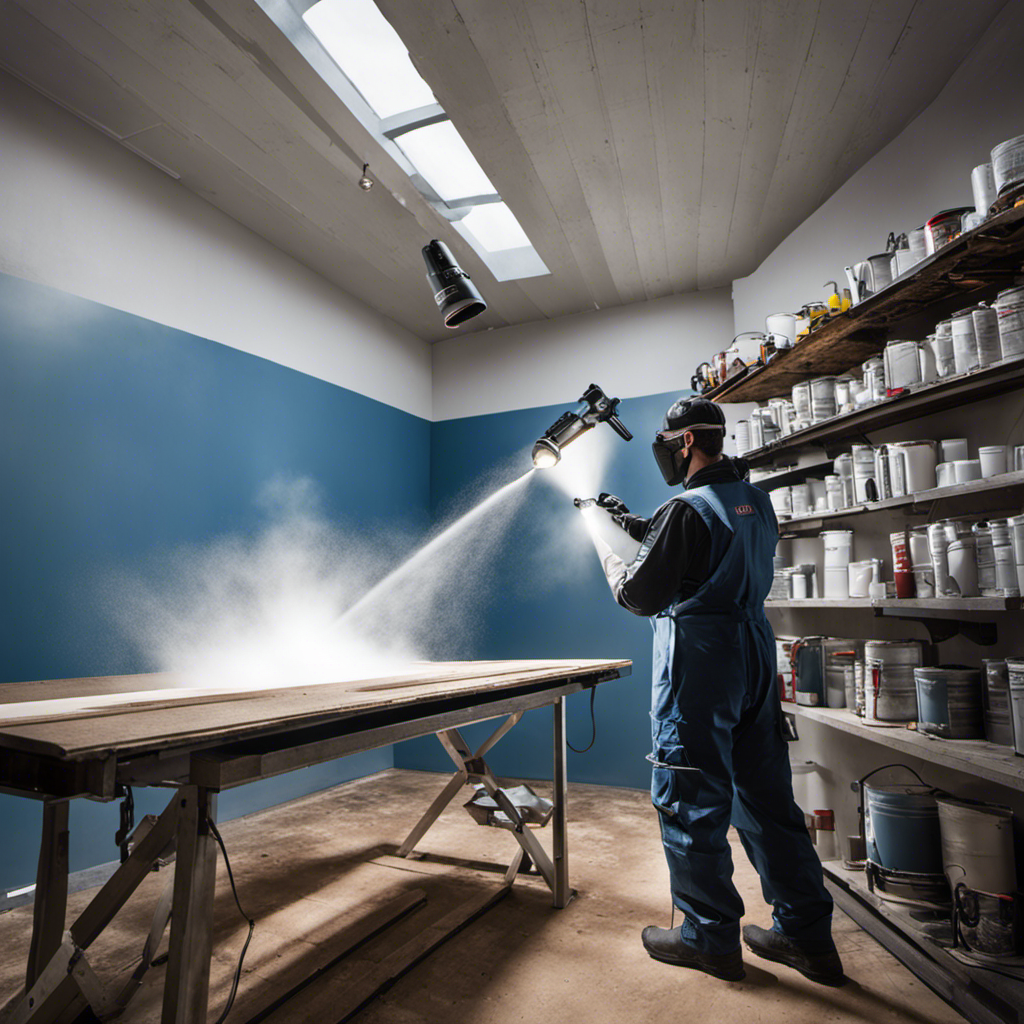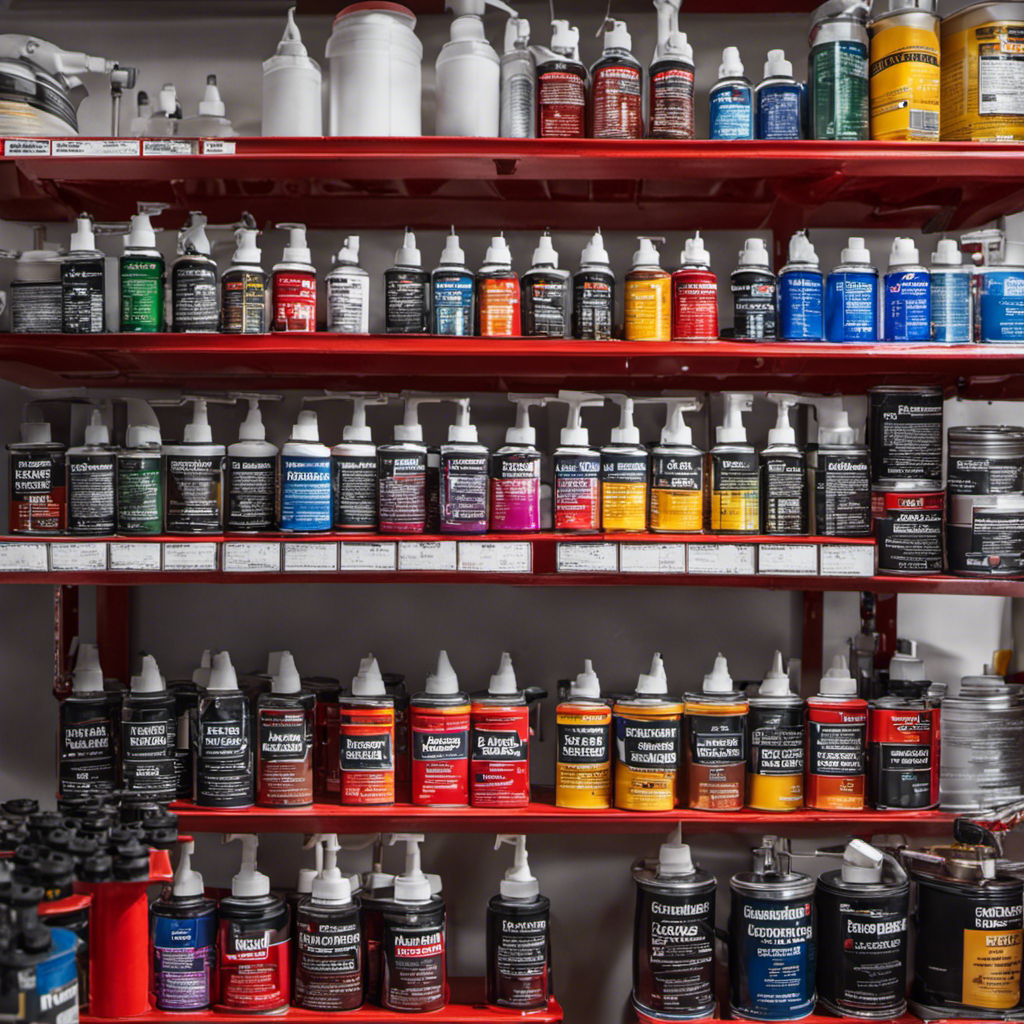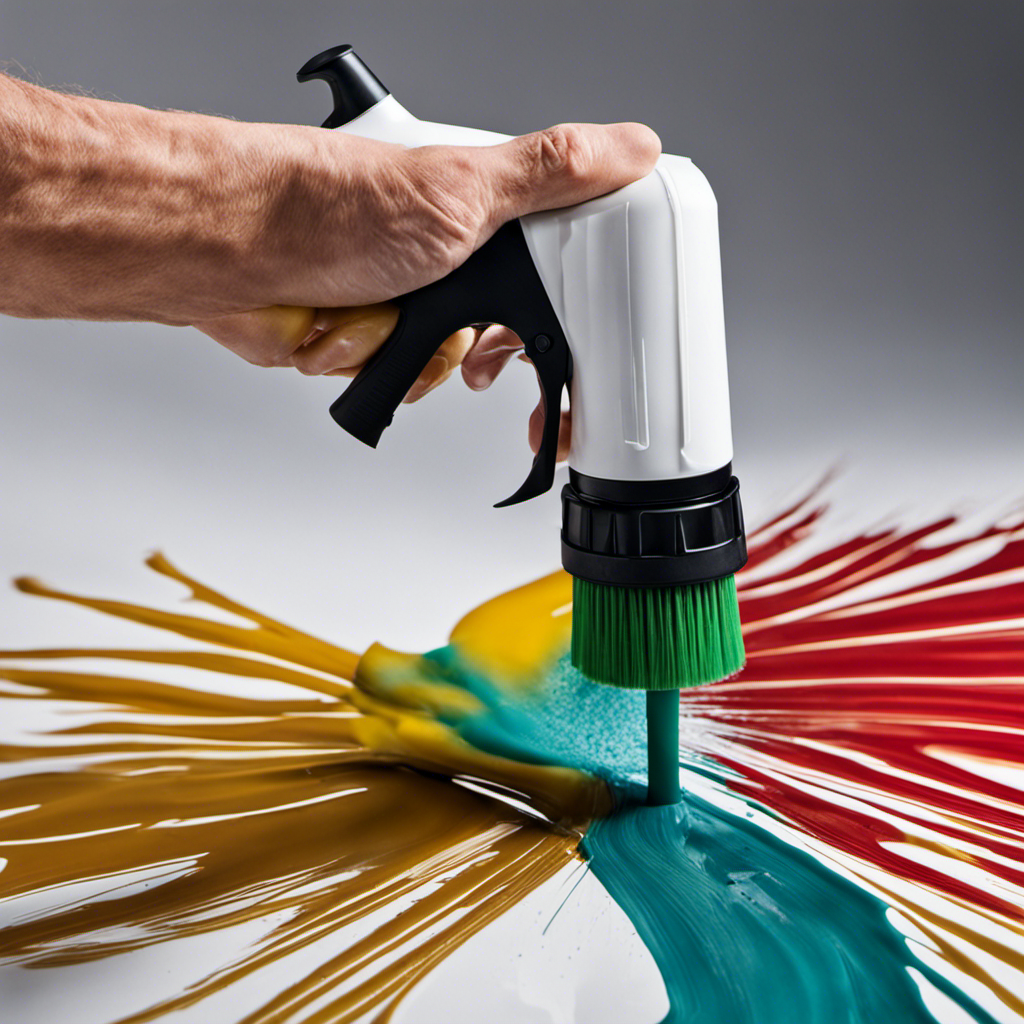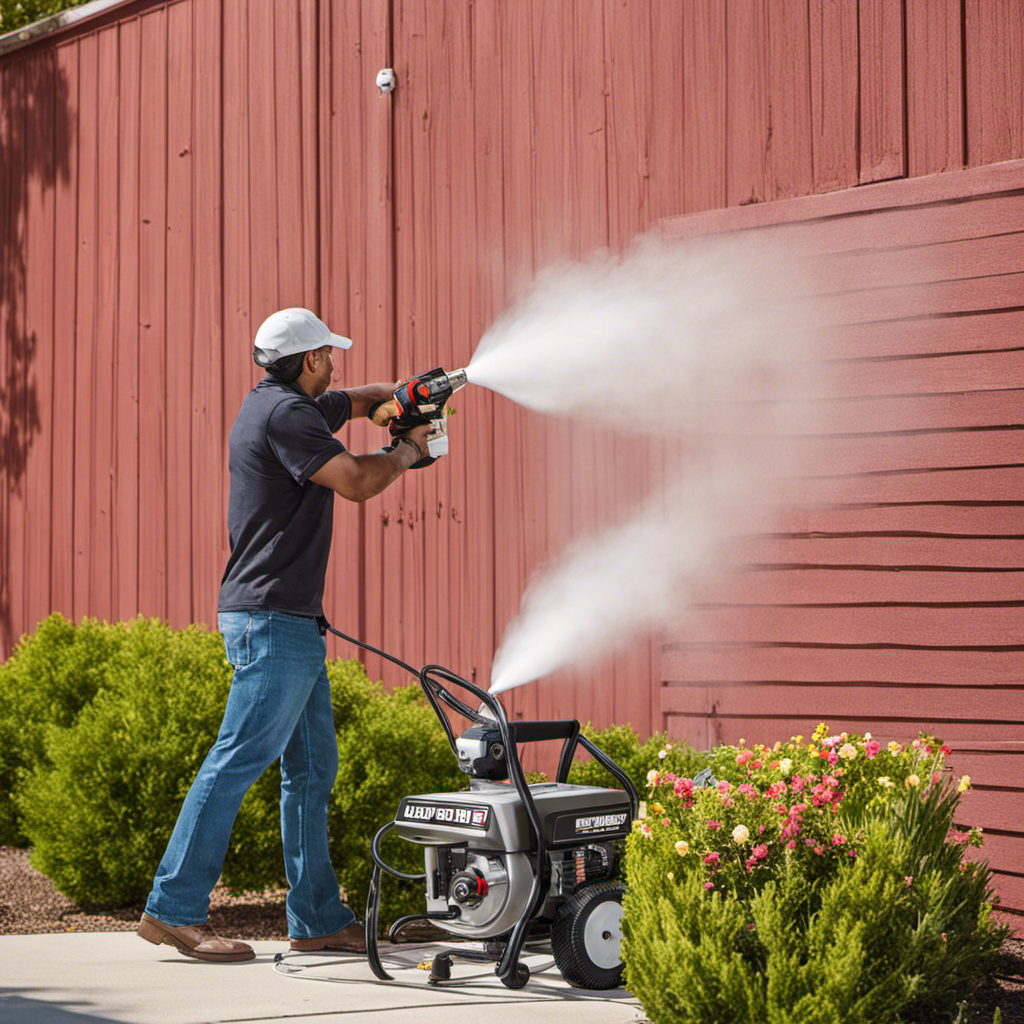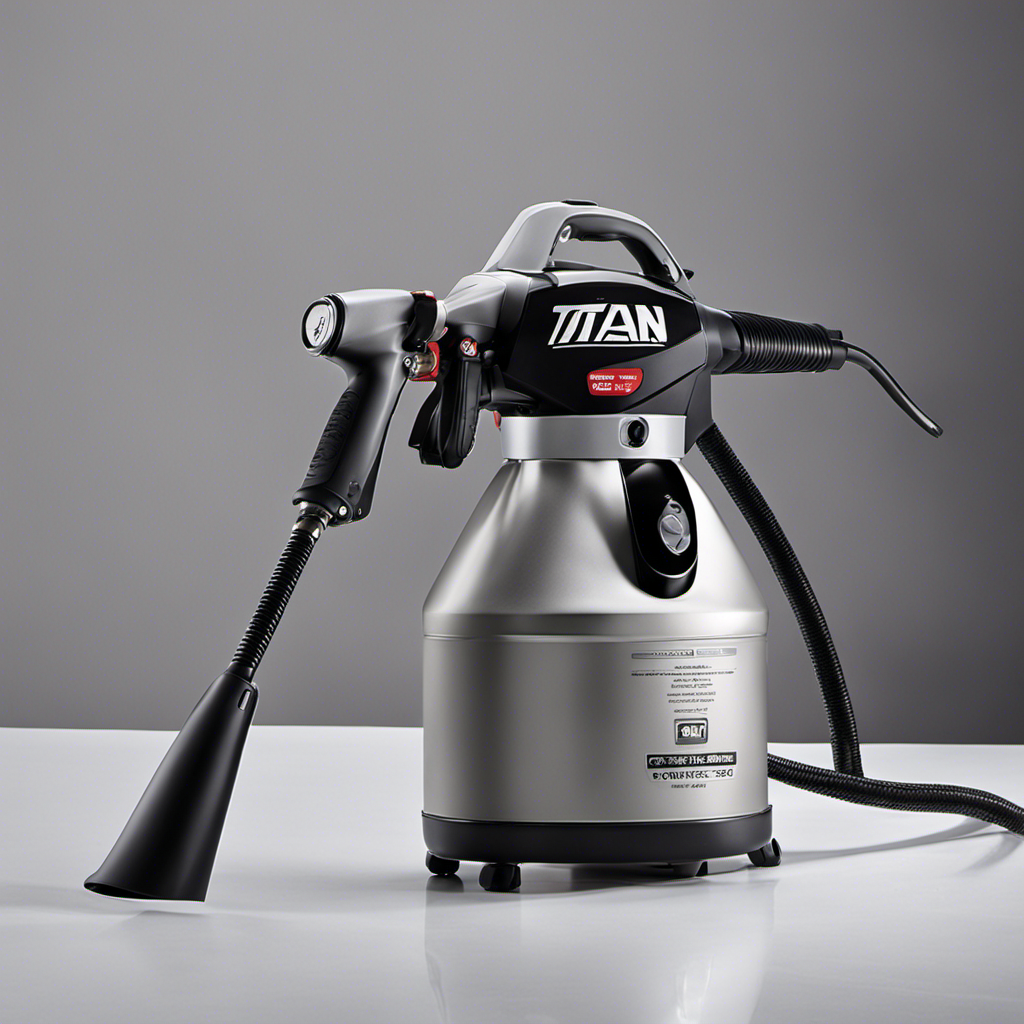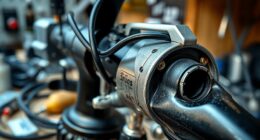Using the Krause & Becker airless paint sprayer is like having a reliable partner for getting perfect painting results. Regularly cleaning and maintaining this powerful tool ensures top-notch performance and long-lasting durability.
This comprehensive guide provides step-by-step instructions on flushing the system, disassembling and cleaning each component, lubricating moving parts, and ensuring proper paint application.
From preparation to troubleshooting, this article equips readers with the knowledge and techniques needed to master the art of airless paint spraying.
Key Takeaways
- Regular cleaning and maintenance of the Krause and Becker airless paint sprayer is crucial for longevity and optimal performance.
- Proper preparation and organization of your workspace, along with gathering necessary supplies, will ensure a seamless painting experience.
- Choosing the right paint and adjusting spray settings, such as pressure and spray pattern, are essential for achieving the desired outcome.
- Mastering technique and application, including maintaining a consistent distance from the surface and overlapping each pass, will result in a professional-looking paint job.
Importance of Cleaning and Maintenance
Regular cleaning and maintenance of the Krause and Becker airless paint sprayer is essential for ensuring optimal performance and extending its lifespan. Neglecting these tasks can lead to common maintenance issues that may affect the sprayer’s functionality.
To prevent such issues, it is important to follow proper cleaning techniques. This includes flushing the system with water or cleaning solution to remove debris or dried paint, as well as disassembling and cleaning each component separately using a brush and cleaning solution.
Lubricating moving parts and regularly inspecting and cleaning filters are also crucial steps in maintaining the sprayer. By regularly cleaning and addressing common maintenance issues, users can ensure that their Krause and Becker airless paint sprayer operates smoothly and efficiently for years to come.
Troubleshooting Common Issues
To troubleshoot common issues with the Krause and Becker airless paint sprayer, the user can easily unclog the nozzle or adjust the pressure control knob.
Common troubleshooting issues with the sprayer include clogged nozzles, which can lead to uneven spray patterns or no spray at all. To unclog the nozzle, the user can remove it from the sprayer and soak it in a cleaning solution or use a small wire brush to remove any debris.
Another common issue is improper pressure settings, which can result in an inconsistent spray or overspray. By adjusting the pressure control knob, the user can ensure the right amount of pressure for their specific project.
Regularly maintaining and troubleshooting the Krause and Becker airless paint sprayer can help ensure optimal performance and extend its lifespan.
Cleaning and Maintaining for Longevity
The user can extend the lifespan of their airless paint sprayer by regularly cleaning and maintaining it. Cleaning techniques are essential for keeping the sprayer in optimal condition.
To clean the sprayer, the user should flush the system with water or a cleaning solution to remove debris or dried paint. Each component should be disassembled and cleaned separately using a brush and cleaning solution.
It is also important to lubricate moving parts to prevent wear and tear. Regularly inspecting and cleaning the filters is crucial to prevent clogs.
When it comes to cleaning products, it is recommended to use mild detergents or specialized cleaning solutions designed for paint sprayers. These products are gentle enough to clean the sprayer effectively without causing damage.
Preparation and Supplies
Clearing the workspace of furniture and objects that may obstruct movement is an important step in preparing for a paint job. This ensures that you have enough space to move around and access all areas that need to be painted.
Once the workspace is clear, it’s time to gather your supplies and prepare the surfaces. When choosing paint colors, consider the existing color scheme and your personal preferences.
Additionally, it’s essential to properly thin the paint if necessary to achieve the desired consistency for the paint sprayer. This can be done by following the manufacturer’s instructions or adding the appropriate amount of thinning agent. Proper thinning techniques ensure that the paint flows smoothly through the sprayer, resulting in an even and professional finish.
Workspace Organization
Organizing the workspace and having all necessary supplies within reach creates a seamless painting experience. Here are three key aspects of workspace organization and paint sprayer maintenance that can help ensure a smooth and efficient painting process:
-
Clearing the workspace: Removing furniture and objects that could obstruct movement allows for easy access to all areas that need to be painted. A clutter-free workspace also reduces the risk of accidents or damage to furniture.
-
Creating a designated area: Designate a specific area for your painting supplies, such as a table or shelf, to keep everything organized and within reach. This prevents time wasted searching for supplies and ensures that you have everything you need readily available.
-
Proper storage of the paint sprayer: When not in use, it is important to store the paint sprayer properly to maintain its longevity. This includes cleaning the sprayer thoroughly, removing any excess paint, and storing it in a clean and dry space.
Choosing the Right Paint
To achieve the desired outcome, the user should carefully choose the appropriate paint color and adjust the spray settings accordingly.
When selecting the paint color for their project, it is important to consider the existing color scheme and personal preferences. Additionally, understanding different paint finish options, such as matte or satin, can help achieve the desired aesthetic.
Once the paint color has been chosen, it may be necessary to thin the paint to achieve the desired consistency for the sprayer.
Adjusting the spray pattern and pressure settings is crucial for achieving optimal results. Different spray patterns require different pressure settings, so it is important to experiment and find the settings that work best for the specific project.
Adjusting Spray Settings
Adjusting the spray pattern and pressure on the paint sprayer is crucial for achieving the desired outcome and optimal results for the project. To evoke emotion in the audience, here are three key factors to consider when adjusting spray settings:
-
Spray pattern adjustment: The ability to adjust the spray pattern allows for versatility in application. Whether you need a narrow pattern for precise detailing or a wide pattern for larger areas, being able to customize the spray pattern ensures that you can achieve the desired coverage and finish.
-
Pressure control adjustment: Controlling the pressure of the paint sprayer is essential for achieving a consistent and even application. By adjusting the pressure, you can avoid issues such as overspray or uneven distribution of paint. This ensures that your project looks professional and achieves the desired results.
-
Experimentation and practice: Adjusting spray settings may require some experimentation and practice. It’s important to familiarize yourself with the paint sprayer and understand how different adjustments affect the outcome. By practicing on a scrap piece of material, you can fine-tune your technique and achieve the best results on your actual project.
Familiarizing Yourself With the Sprayer
The user can become familiar with the sprayer by reading the instruction manual and practicing on a scrap piece of material before starting the actual project. This will help them understand the different features and functions of the Krause and Becker airless paint sprayer. Additionally, it is important to learn about sprayer maintenance techniques and troubleshooting tips to ensure optimal performance and longevity of the sprayer.
To provide a visual representation of these ideas, a table can be used:
| Sprayer Maintenance Techniques | Sprayer Troubleshooting Tips |
|---|---|
| Flush the system with water or cleaning solution to remove debris or dried paint | Unclog the nozzle if necessary |
| Disassemble and clean each component separately using a brush and cleaning solution | Adjust the pressure control knob if the spray is uneven |
| Lubricate moving parts to prevent wear and tear | Check for leaks or loose connections |
| Regularly inspect and clean the filters to prevent clogs | Ensure proper paint consistency and thinning |
| Store the sprayer in a clean and dry place when not in use | Clean the sprayer thoroughly after each use |
Technique for Consistent Distance
After familiarizing yourself with the Krause and Becker airless paint sprayer, it’s time to focus on improving your technique for maintaining a consistent distance from the surface. This is crucial for achieving an even and professional finish. Here are some tips to help you improve your technique and ensure proper surface preparation:
-
Measure and mark: Use a measuring tape and pencil to mark the desired distance from the surface. This will serve as a reference point and help you maintain consistency throughout the painting process.
-
Practice with a scrap piece: Before starting your actual project, practice spraying on a scrap piece of material. This will allow you to get a feel for the sprayer and fine-tune your technique before tackling the main surface.
-
Use a guide or spacer: If you struggle with maintaining a consistent distance, consider using a guide or spacer. This can be a simple piece of cardboard or a specialized tool that helps you maintain the desired distance from the surface.
Achieving a Smooth Finish
To achieve a smooth finish, the user should focus on maintaining a consistent speed and angle while operating the sprayer. This ensures that the paint is evenly distributed and avoids streaks or drips. Additionally, adjusting the spray pattern and pressure settings is crucial for achieving the desired outcome. Different spray patterns require different pressure settings, so it’s important to experiment and find the right combination for your project. Thinning the paint consistency may also be necessary, especially if it is too thick to properly atomize and spray. This can be done by adding a small amount of water or paint thinner until the desired consistency is achieved. By following these tips and techniques, you can achieve a professional-looking finish with your Krause and Becker airless paint sprayer.
| Spray Pattern | Pressure Setting | Thinning Consistency |
|---|---|---|
| Vertical | High | Thin |
| Horizontal | Medium | Medium |
| Round | Low | Thick |
Overlapping for Even Coverage
Achieving even coverage requires the user to overlap each pass when operating the Krause and Becker airless paint sprayer, ensuring that every area is adequately coated. This technique is essential for achieving smooth and professional-looking results.
Here are three key points to keep in mind when using overlapping techniques to achieve even coats:
-
Consistent distance: Maintaining a consistent distance from the surface while overlapping each pass is crucial. This helps to avoid uneven coverage and drips.
-
Spray nozzle angle: Adjusting the spray nozzle angle to match the surface and maintaining a consistent speed will result in a smooth finish. Moving too quickly can lead to thin coverage, while going too slowly can cause drips and uneven layers.
-
Proper overlap: Giving each pass a nice overlap ensures that every area is adequately coated. This technique helps to eliminate any missed spots and creates an even and seamless finish.
Tips for a Professional-Looking Paint Job
When aiming for a professional-looking paint job, it is important to properly prepare the workspace and choose high-quality paint. Here are some tips for achieving that polished finish.
First, make sure to thin the paint if necessary to achieve the desired consistency for the sprayer. This will help prevent clogs and ensure smooth application.
Additionally, be aware of common paint application mistakes such as applying too much paint at once or not waiting for each coat to dry before applying the next. Applying multiple thin coats will result in a more even and professional finish.
Lastly, take the time to practice your technique on a scrap piece of material before starting your actual project. This will help you refine your skills and avoid any costly mistakes.
Safety Precautions and Proper Cleaning
Wearing proper safety gear, such as protective clothing, eyewear, and a respirator, is essential when operating the sprayer and cleaning it after each use. Here are three important safety precautions to keep in mind:
-
Protect yourself: Safety should always be the top priority when using any paint sprayer. Wearing the appropriate safety gear, including gloves, goggles, and a respirator, will safeguard against harmful fumes and potential accidents.
-
Proper storage: After each use, it is crucial to store the sprayer correctly. This includes draining any remaining paint, cleaning the components thoroughly, and storing them in a dry and secure location. Proper storage will help prolong the lifespan of the sprayer and prevent any damage.
-
Safety gear requirements: Always follow the manufacturer’s recommendations for safety gear requirements. Different projects may have specific safety gear requirements, such as wearing a full face shield when working with toxic or hazardous materials.
Frequently Asked Questions
How Do I Troubleshoot Issues With the Airless Paint Sprayer if It’s Not Spraying Properly?
If the airless paint sprayer is not spraying properly, there are a few troubleshooting tips you can try.
Common problems may include clogged nozzle, incorrect pressure settings, or paint consistency issues.
Start by checking for any clogs in the nozzle and clearing them if necessary.
Adjust the pressure settings to ensure they are suitable for your project.
Also, make sure the paint is properly thinned for the sprayer.
These simple steps can often resolve the issue and get your sprayer back to working properly.
Can I Use the Airless Paint Sprayer for Different Types of Paint, Such as Oil-Based or Latex?
Yes, the airless paint sprayer can be used for different types of paint, including oil-based and latex. However, it’s important to follow the cleaning process between paint changes to ensure proper functioning and avoid mixing different paint types.
Cleaning the sprayer thoroughly will prevent any potential clogs or issues caused by residue from previous paint. By maintaining a clean sprayer, you can achieve optimal performance and achieve professional results with different types of paint.
What Safety Precautions Should I Take When Using the Airless Paint Sprayer?
When using an airless paint sprayer, it’s important to take proper safety precautions. These include wearing protective clothing, such as gloves and goggles, to prevent any paint from coming into contact with your skin or eyes.
Additionally, it’s recommended to use a respirator to protect yourself from any fumes or particles in the air.
Proper maintenance of the airless paint sprayer, such as regular cleaning and lubrication, is also crucial for safe and effective operation.
How Often Should I Clean the Filters of the Airless Paint Sprayer?
Cleaning the filters of the airless paint sprayer is an essential maintenance task. The frequency of cleaning depends on factors such as the type of paint used and the amount of usage. However, it is generally recommended to clean the filters after every use or at least once a week for regular use.
Proper filter maintenance ensures that the sprayer operates efficiently by preventing clogs and maintaining optimal performance. Regular cleaning of the filters will help prolong the lifespan of the airless paint sprayer.
Is the Airless Paint Sprayer Suitable for Small Touch-Up Projects or Is It Primarily for Larger Painting Jobs?
The airless paint sprayer is suitable for both small touch-up projects and larger painting jobs. Its versatility allows for precise and efficient application, making it ideal for any scale of work.
The advantages of using an airless paint sprayer include its ability to cover large areas quickly and provide a smooth and professional finish. Whether you need to touch up a small area or tackle a larger project, the airless paint sprayer is a valuable tool.
Conclusion
In conclusion, maintaining and using the Krause & Becker airless paint sprayer is like giving your painting projects a breath of fresh air. By regularly cleaning and maintaining the sprayer, you ensure its optimal performance and longevity.
Just like a well-oiled machine, this sprayer needs a little TLC to keep it running smoothly. With the proper preparation, technique, and safety precautions, you can achieve a professional-looking paint job that will leave your friends and neighbors green with envy.
So go ahead, grab that sprayer, and let your creativity flow!
Drenched in creativity and armed with a fountain pen, Isolde weaves words as gracefully as a painter strokes their canvas. A writer for Paint Sprayer Zone, her passion for colors, textures, and spaces finds a harmonious blend with her profound knowledge of painting tools and techniques.
Having grown up in a family of artists, Isolde’s tryst with paints began early. While her relatives expressed themselves on canvas, Isolde found her medium in words. She dedicated herself to chronicling the world of painting, understanding the nuances of each tool, and the artistry behind every spritz of a paint sprayer.
